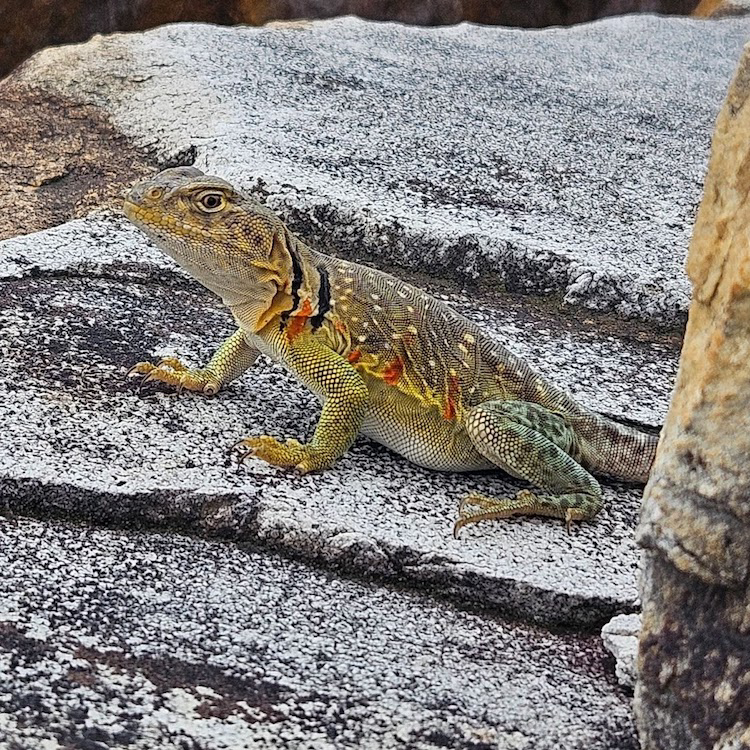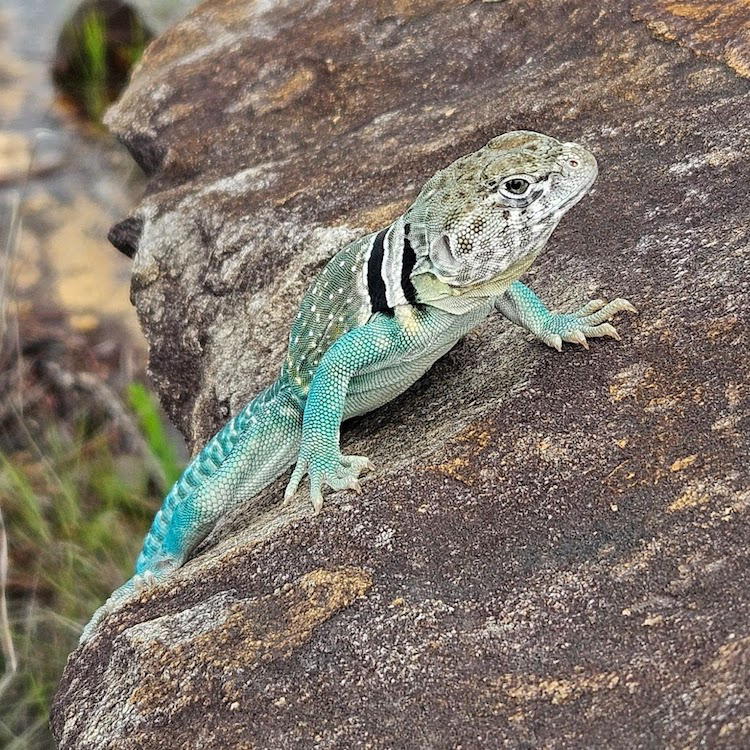

|
A dozen Oklahoma-born eastern collared lizards now call The Natural State home thanks to a partnership between the Arkansas Game and Fish Commission, the Oklahoma Department of Wildlife, the Little Rock Zoo, Tulsa Zoo and the Collared Lizard Conservation Team. With a little luck, these transplants may be able to replenish a pocket of prime habitat in west-central Arkansas.
Eastern collared lizards, affectionately called “mountain boomers” by many wildlife enthusiasts, are one of Arkansas’s species of greatest conservation need. They are some of the largest lizards found in Arkansas, sometimes reaching 14 inches in length. Males possess vibrant yellow, green and teal markings, while females tend to be more muted, with reddish-orange accents. These lizards have seen dramatic declines throughout much of their range in Arkansas as their preferred fire-tolerant habitats have been swallowed by cedars and other woody plants. Thanks to multi-agency partnerships and work funded through the State Wildlife Grant Program, aggressive habitat restoration in many key locations using prescribed fire and cedar removals have restored some of this habitat. Additional SWG projects have helped to establish captive breeding programs in coordination with the Little Rock Zoo have been used to re-establish these charismatic reptiles in newly recovered sites.
According to AGFC Herpetologist Amanda Bryant, the lizards were transplanted to a portion of private land that had historically housed one of the largest monitored populations of the species but saw a population crash last year.
“We want to reestablish a population at that site because it has so much quality habitat for the species,” Bryant said. “We do not know the cause of the crash, so we are starting with a modest number and monitoring closely in the next few weeks for any disease or environmental issue. Four of the females we released had eggs, so we’ll go back later in the summer to see if we can find any new hatchlings at the site.”
Bryant said the lizards were captured with the help of Casey Brewster of the Collared Lizard Conservation Team under access and permits granted through Mark Howery at ODWC. Kay Backues at the Tulsa Zoo and staff at the Little Rock Zoo screened the reptiles to ensure they were free of diseases and parasites before relocating them.
“It’s been really great to see the team come together and make this project a success,” Bryant added. “I also want to especially thank Matt Gifford and Casey Brewster of the Collared Lizard Conservation Team for being key members of the reintroduction of this fascinating reptile species in a portion of Arkansas where they once thrived.”